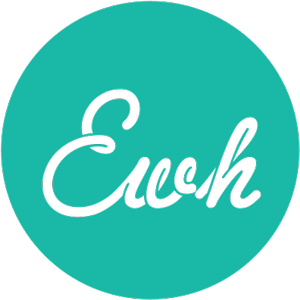
How To Get Started Writing and Publishing Children’s Books
“I’ve written a children’s book. How do I get it published?”
“How do I find an illustrator for my children’s book?”
“I wrote a children’s book that my daughter illustrated. Can I get it published?”
“My (kids, students, grandchildren) love my story! How do I find an agent/publisher?”
These and questions like them come to my inbox on a weekly basis. And I understand it! Writing and publishing books for children is among the most rewarding and creative things to do—why wouldn’t everyone want to do it? The journey often begins with the question of how to get started writing a book, which is a crucial first step in this fulfilling process.
The answers to these questions are not quick and easy, however…. so, I wrote this post to provide an introductory understanding of how the children’s publishing industry works and some resources to get started with should you be interested in pursuing publication.
First a bit about me. I have written or co-written over 30 books for children of all ages, nine of which have been New York Times bestsellers. For six years, I ran the Julie Andrews Collection imprint at Harper Collins, where we acquired, edited, and published children’s books by 3rd party authors as well as our own books. Since 2008, I have taught writing for children and young adults at the graduate and undergraduate level for Stony Brook University’s MFA in Creative Writing, and directed their annual Southampton Children’s Literature Conference. For the past twenty years, I have also worked as an independent editor offering evaluations, feedback, line editing, and consultation to emerging and established authors. I am one of the co-Founders of Picture Book Summit, the annual online conference for picture book authors and illustrators, as well as The Complete Picture Book Submissions System. I have led workshops and given keynotes and other presentations on writing and publishing for children all over the country. I host my own online courses in writing for children, Just Write for Kids, and have been published by Harper Collins, Little, Brown Books for Young Readers/Hachette Book Group, Hyperion, and Andrews McMeel—so, I believe you can trust me in providing current, relevant, and useful information when it comes to writing and publishing for children.
First Things First
I will share some recommended resources for learning more about writing and publishing children’s books below… but before you scroll down, please consider this important information:
First the good news.
Children’s publishing is among the more satisfying and joyful vocations. The community—writers, illustrators, editors, agents, marketing directors, librarians, booksellers, and more—is for the most part a warm, mission-driven, and unified one. We are making books for other people’s children, after all, and we understand that these books have the power to change lives. Books help young readers make sense of their world, and introduce them to experiences, cultures, and ideas that are different from their own. And when children see themselves reflected in the pages of a book, they can feel accepted and validated…sometimes for the first time. Dr. Rudine Sims Bishop, known for her sociologically groundbreaking children’s literature research, says that children’s books provide “windows and mirrors” for young readers. Writing and publishing for young people is a joy, a noble calling, and a responsibility that those of us who work in the industry take very seriously.
Now for some straight talk.
Children’s book publishers receive thousands of manuscript submissions a year, only a handful of which ever get published. Most will not accept a manuscript submission unless it’s made through a literary agent, for legal reasons… and literary agents are as selective in whom they work with and which projects they are willing to take on as editors are. Most agents will not represent an author with only one book—since they make their living from commissions on author royalties, they are looking to represent career-authors whose work and platform they can help to shape and grow.
Children’s publishing is a tightly governed industry with meticulous standards for each format (board book, picture book, leveled reader, middle grade, young adult. etc.) Unlike the adult publishing industry, children’s publishing is deeply influenced by what are often referred to as “the gatekeepers” – not just agents, editors, and publishers, but the teachers and librarians who make up the lion’s share of the reviewing body and who have strong opinions as to what constitutes quality literature for children. For this reason, self-publishing a children’s book is rarely successful, because self-published children’s books are seldom reviewed—and not often carried in brick-and-mortar bookstores and libraries.
Finally, it’s important to understand the economics of children’s publishing. Very few authors, even established ones, make enough money to live solely on the income from their books. In traditional publishing, authors receive a modest “advance” on signing a book contract that reflects an industry standard royalty payment (10% of projected net sales). Only when this advance has “earned out” and the book has covered its costs of publication are there any further royalty payments, and this is a rare occurrence. For most authors, the advance is all the money they ever receive relative to a published book. This is why most authors, even established ones, have other sources of income—such as teaching.
If none of the above is daunting to you, and you are game to do a bit of a deep dive, then read on!
How to Get Started Writing a Book
Like any other serious business and art form, getting up to speed with respect to the industry standards and guidelines relative to children’s publishing takes time. Below are some great resources to learn more about children’s publishing and to support you in your journey:
- Join the Society of Children’s Book Authors and Illustrators. This is a must for anyone remotely interested in writing children’s books. SCBWI is a large international organization dedicated to supporting children’s book authors and illustrators at all levels of experience. For a nominal annual membership fee, you have access to their Essential Guide to Publishing for Children, a PDF book filled with information about agents, publishers, submissions, etc. as well as a copy of their bi-monthly Bulletin magazine, and access to their website with news and information about their Conferences, local chapters etc. They host a huge annual conference in NYC in January and one in LA in August, as well as smaller, localized ones throughout the year.
- Consider joining some online groups specific to childrens lit, as well as some membership based resource sites. One free one I like is kidlit411.com. They provide a ton of information and resources for all formats (picture book through YA) and host a great, active Facebook group. Julie Hedlund’s 12 X 12 Picture Book Challenge is a fabulous membership organization that provides support, inspiration, and resources for picture book authors and illustrators on a yearly basis. (Membership registration opens in January and February.)
- There are wonderful workshops in writing for children and young adults offered by the Highlights Foundation, as well as The Writing Barn. I also offer self-study courses in writing for children and young adults, here. And of course, I recommend the Southampton Children’s Lit Conference which takes place every July in Southampton, NY.
- Read some books on the craft. Writing Picture Books by Anne Whitford Paul is an essential resource for those who want to write picture books. For those interested in writing middle grade or young adult (YA), I recommend Mary Kole’s Writing Irresistible Kidlit.
- Check out Children’s Writer’s & Illustrator’s Market – published annually by Writers’ Digest. This book provides a comprehensive overview of the industry’s agents, editors, and publishing guidelines. However, because there is so much turnover in the industry each year, be sure to reference publisher and agency websites directly before submitting, in case of changes between editions.
- Hire an independent editor to assess or help edit your manuscript. You can check out my editorial services here, refer to SCBWI’s vetted list in their “Big Book,” or ask for a referral from your writers groups. Just be sure to work with someone who has direct experience in the genre/form that you write.
- Most importantly, read, read, read. The children’s publishing industry is constantly evolving, and the books being acquired for publication today are very different from those we read and loved as children, or even those published ten years ago. Read books published within the past 3-5 years, as well as reviews and articles about the industry in publications like Publishers Weekly and School Library Journal.
To your success!


